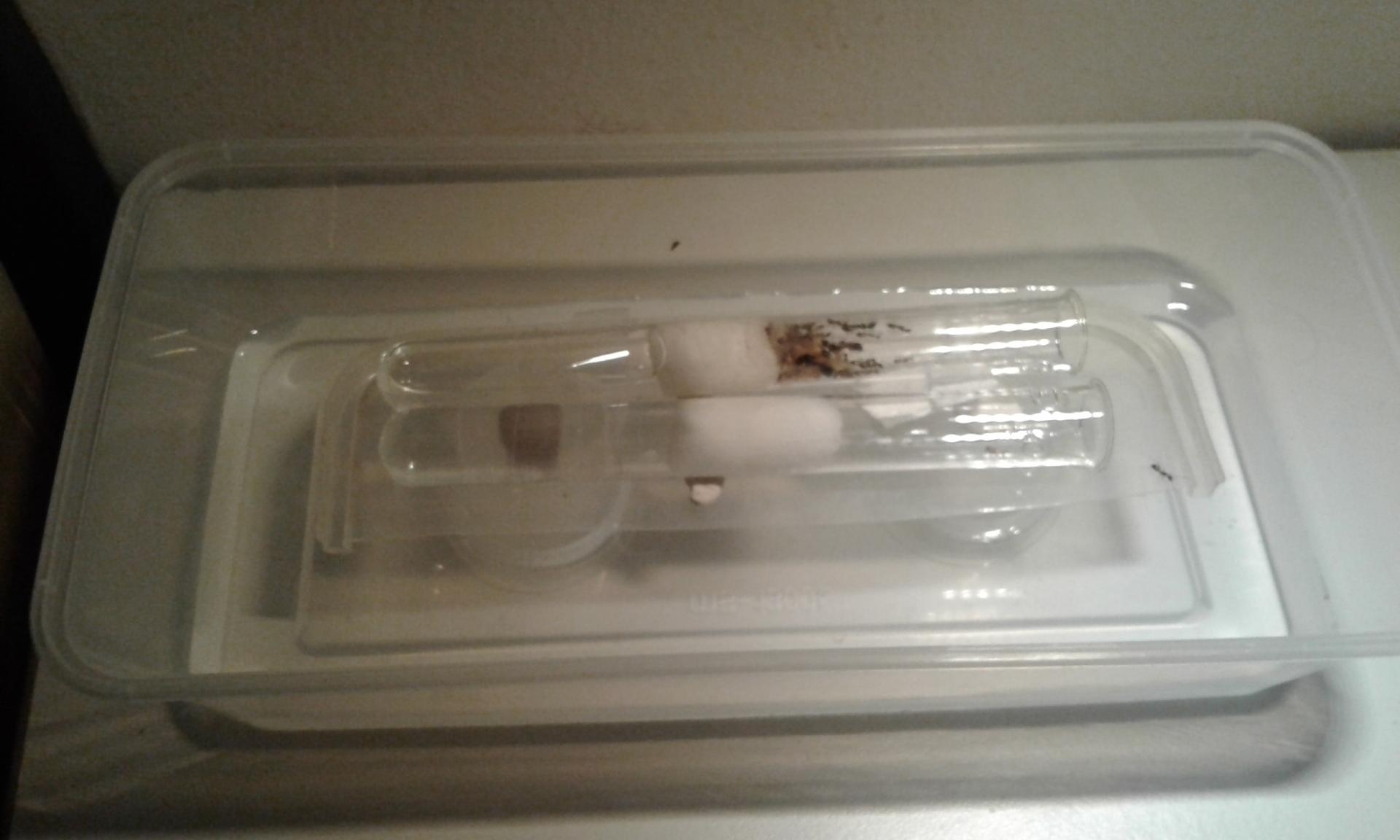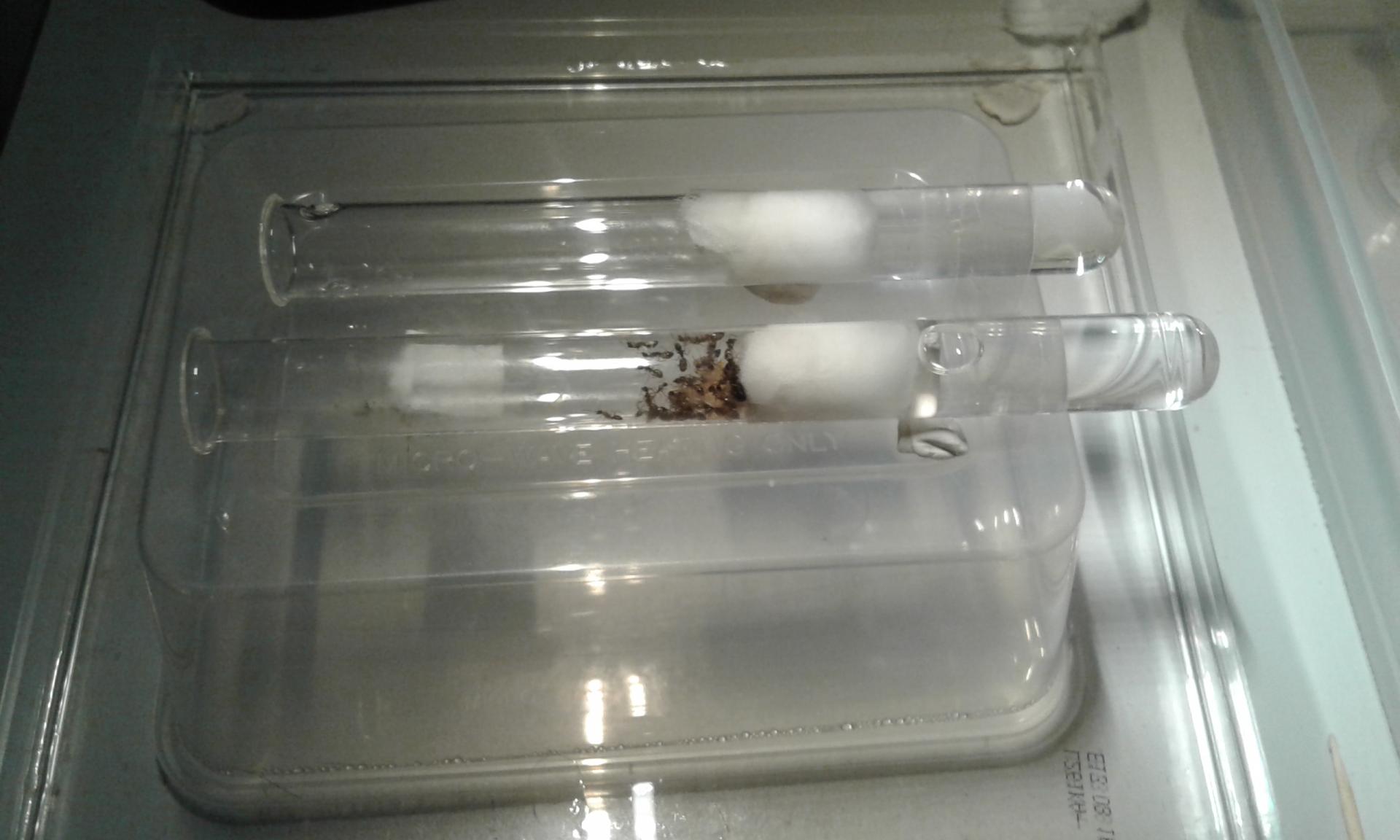What does one do when the colony outgrows its founding test-tube? I attach a simple outworld and feed them there, since it’s impossible to contain them in the test tube when feeding. This set-up is considered sufficient when the colony is small (say twenty-something workers) and I ought to be able to look after it without too much fuss.
Unfortunately, two previous colonies perished when kept in such conditions. It was appalling to observe their sudden degeneration to an excruciating death. They had lost their will to live, and were not interested in eating honey or eclosing pupae. Perhaps the insects I fed them contained poison. Or there was insufficient ventilation. The mould was not at a level which one would consider dangerous, but maybe this species is especially sensitive to it.
I am able to catch camponotus albosparsus ants relatively easily, and will keep growing spare colonies as back-ups. Having suffered seeing two colonies die, I feared my next two that approached the size the dead ones had reached could potentially suffer the same fate.
So I felt the formicarium upgrade needed to be done earlier than ordinarily recommended. I could feed them only tiny insects to reduce the chance of poisoning. But perhaps the most important job was to improve the living conditions.
Ventilation is not a problem when the test-tube is out in the open, but the ants need to be contained in something. One solution is to surround the test tube with a water moat. I’ve even given a second test-tube that at least provides more drinking water even if the ants are not ready to move brood into it.
Here are the two colonies in their new homes.
This one is in a plastic container long enough to contain the test tubes.
Surprisingly a Ferero Roche box is useful here in containing a moat.
The moat has its limitations, of course. Ants could drown, but in practice this has happened only to those which haplessly plummet into the water and are dying anyway. As for the issue of ants escaping, this does happen, and it is irritating to catch and return them. I think very few have escaped permanently as escapees usually hang around and are easily visible.
I’m willing to risk losing a few ants if this is the price to pay for an environment that is more habitable and less risky. After all I don’t know how little ventilation and how much dirt they can tolerate. Let’s see if this is a helpful step in their growth.


















